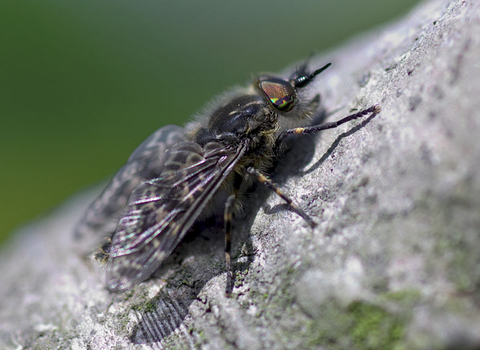
Notch-horned Cleg-fly ©northeastwildlife.co.uk
Notch-horned cleg-fly (horse fly)
The Notch-horned cleg-fly isa horse fly dark grey in colour, with grey-brown mottled wings and intricately striped, iridescent eyes. There are 30 species of horse-fly in the UK; this is one of the most frequently encountered species and also one of the smaller ones. Some of us have felt the painful bite of the Notch-horned cleg-fly (a 'horse-fly') while out walking in grasslands or woods, although it prefers to feed on the blood of cows and horses.
Scientific name
Haematopota pluvialisWhen to see
May to SeptemberSpecies information
Category
Statistics
Length: 1cmCommon.
